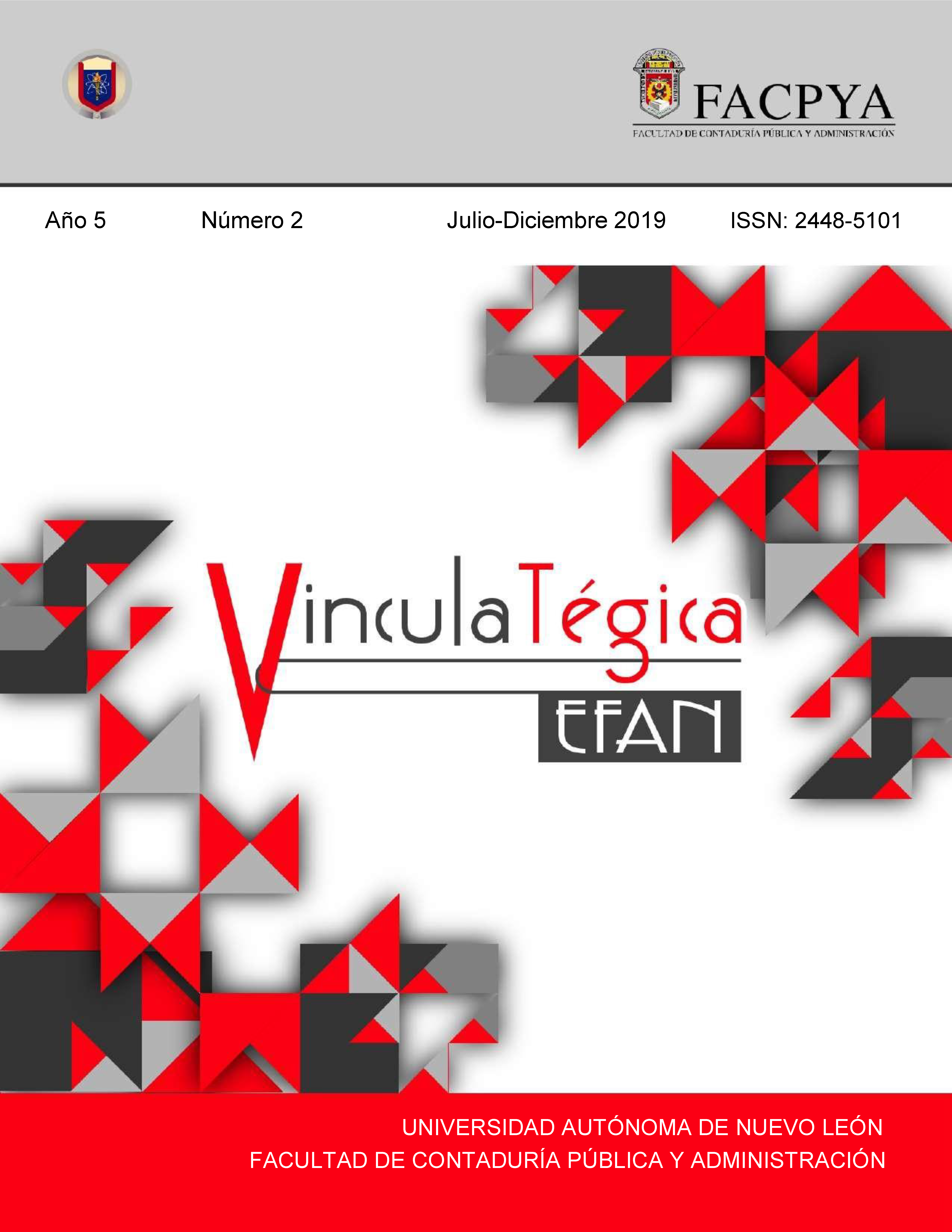Características demográficas por tipo de asociación de los microemprendimientos en México
DOI:
https://doi.org/10.29105/vtga5.2-757Keywords:
Demográficas, Emprendedor, Emprendimiento, MicronegocioAbstract
In Mexico there are national statistical data generated by the National Institute of Statistics and Geography (INEGI) through the application of the National Micronegocios Survey (ENAMIN) for the year 2012. This research studies in a descriptive way the national statistics provided by INEGI, especially data related to demographic aspects, sector and the reasons that motivate people to undertake a micro-business in the national territory. Among some of the findings found, there is a gender balance between women and men who head family micro-businesses, almost half of the entrepreneurs who undertake microbusinesses are married, and the age segment that dominates the three types of business association corresponds to those over 41 years of age.
Downloads
References
Alvarado Lagunas, E., Dávila Aguirre, M., y Vázquez Zacarías, M. (2018). Factors that influence the continuity and survival of a micro-business in Mexico. Contaduría y Administración. 63(3), 1-20. DOI: https://doi.org/10.22201/fca.24488410e.2018.1281
Alvarado Lagunas, E., Ortiz Rodríguez, J., y Morales Ramírez, D. (2018). Factores que influyen en el emprendimiento de un micronegocio familiar en México. Revista de Economía del Rosario. 21(1), 153-180. DOI: https://doi.org/10.12804/revistas.urosario.edu.co/economia/a.6816
Benavides, M. D., Sánchez, M. I., y Luna, R. (2004). El proceso de aprendizaje para los emprendedores en la situación actual: Un análisis cualitativo en el ámbito universitario. Dirección y Organización. (4), 34-48. DOI: https://doi.org/10.37610/dyo.v0i30.122
Birley, S. (1985). The Role of Networks in the Entrepreneurial Proces. Journal of Business Venturing. (1), 107-117. DOI: https://doi.org/10.1016/0883-9026(85)90010-2
Birley, S., y Westhead, P. (1994). A taxonomy of business start-up reasons and their impact on firm growth and size. Journal of Business Venturing. (9), 7-31. DOI: https://doi.org/10.1016/0883-9026(94)90024-8
Brockhaus, R.H. (1980). Risk taking propensity of entrepreneurs. Academy of Management Journal. (23), 63-77. DOI: https://doi.org/10.2307/255515
Cano, C.J., García, J.G, y Segura, A.B. (2003). Actitudes emprendedoras y creación de empresas en los estudiantes universitarios. S.L.: Almeida.
Gerber, M. E., Sánchez, G. (1997). El mito del emprendedor: por qué no funcionan las pequeñas empresas y qué hacer para que funcionen. Barcelona: Paidós.
Gibb, A., y Ritchie, J. (1982). Understanding the process of starting small business. European Small Business Journal. (1), 26-46. DOI: https://doi.org/10.1177/026624268200100102
Global Entrepreneurship Monitor (2013). Informe GEM España 2013. Disponible en: http://www.gemspain.com/?q=presentacion-informe-2013.
INEGI. (2012). Encuesta Nacional de Micronegocios 2012. Disponible en: http://www.beta.inegi.org.mx/programas/enamin/2012/.
Leach. P. (1993). La empresa familiar. Buenos Aires: Ediciones Granica.
Martínez, J., Mira, I., y Gómez, J.M. (2012). Influencias de las percepciones personales sobre la actividad naciente. Una perspectiva de género a través de diferentes entornos económicos. Universidad Miguel Hernández.
Moliner, M. (2007). Diccionario de uso del español. Madrid: Gredos.
Orrego, C. (2004). La dimensión humana del emprendimiento. Revista Ciencias Estratégicas. 16(20), 225-235.
Tagiuri, R. and Davis, J. (1982). Bivalent attributes of the family firms. Working paper, Harvard Business School, Cambridge, MA. Reprinted in Family Business Review. (9), 199-208. DOI: https://doi.org/10.1111/j.1741-6248.1996.00199.x
Tapies J. (2009). Empresa familiar: el valor de los valores. Revista de Antiguos Alumnos del IEEM. (3), 56-61.
Trejo, E. (2004). Mujer emprendedora en distintos contextos organizativos. Variables personales que mejoran la inserción de la mujer al autoempleo y al trabajo creativo. Centro Secretariado de Asuntos Sociales de la Universidad de Valladolid.
Downloads
Published
How to Cite
Issue
Section
License

This work is licensed under a Creative Commons Attribution 4.0 International License.
a). Authors keep copyright and give the journal the right of the first publication of the work under a Creative Commons attribution license. This license allows others to share the work as long as original authorship and initial publication in this journal is acknowledged.
b). Authors may make other independent and additional contractual agreements for the non-exclusive distribution of the version of the article published in this journal (e.g., include it in an institutional repository or publish it in a book) as long as they clearly indicate that the work was published for the first time in this journal.







